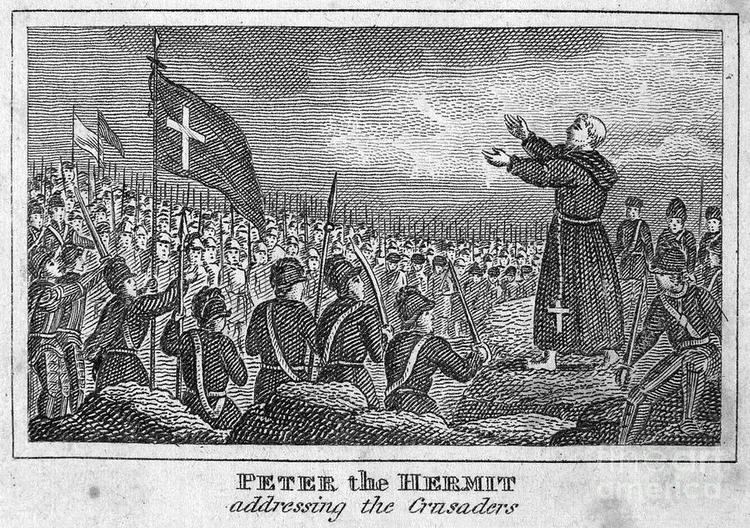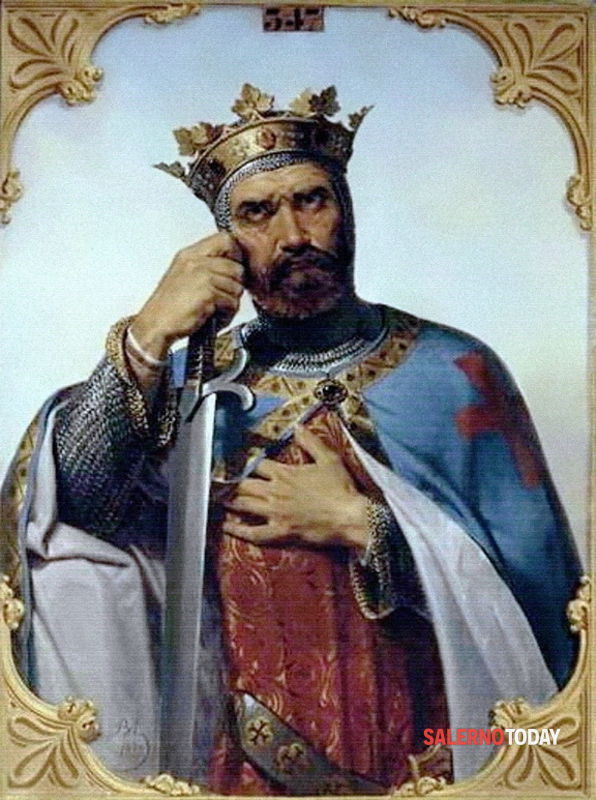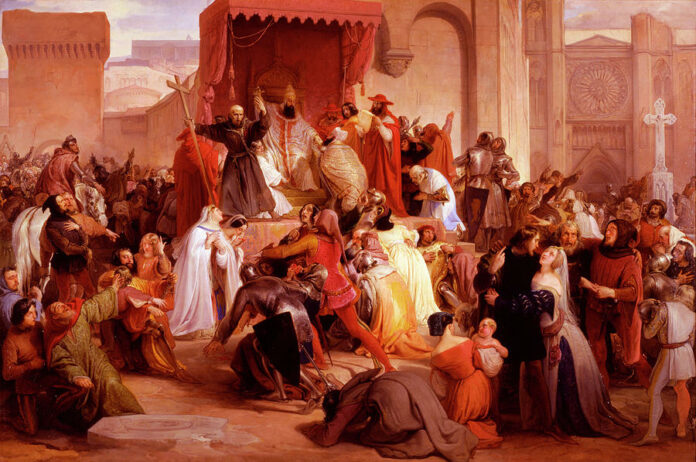By Dimitris Topalis,
The cause of the First Crusade
The man responsible for the first crusade was Pope Urban the Second (1035-1099). Pope Urban II saw the power of the Islam rising and he wanted to stop it from spreading further. That is why he travelled to France and asked for a meeting to happen, to address that matter. He visited the council of Clermont and wanted to achieve more help to support to his cause. On November 27, 1095, Pope Urban II made perhaps the most influential speech in the entire Middle Ages, giving rise to the Crusades, by calling the Christians in Europe to a war against Muslims in order to reclaim the lost Holy lands, with a cry of “Deus Vault”. Furthermore, he pointed to the carving of the final selection, in which god would select the worthy Christians to join him in paradise while the others would go to Hell and he stated that the Crusades would help them reach paradise, while those who would not answer the call would be punished. Pope Urban the second was a brilliant speaker and he knew what he had to say in order to get help to support his cause.
The People’s Crusade
After the summit, a man named Peter the Hermit started travelling the world and preaching to common folk about the need to get the Holy Land back from the Muslims. Peter had a lot of success in convincing common people to support his cause, because his fiery speeches inspired the masses. In the year 1096 the Hermit travelled to France and Germany. Peter reached the city of Germany named Cologne and from there, after he had thousands of people following him, started the march against Jerusalem. The People’s Crusade, as it was called, consisted of common people (women, children, elders, and some criminals), which most of them did not have any experience in battle. They thought that the march to Jerusalem would be easy and quick, but the reality was different. Those delusions that the road to Jerusalem was easy, started to fall apart after the trust in the face of Peter the Hermit started to be questioned. In Hungary and in the Byzantine Empire, they did atrocious things, they burned cities, killed and terrorized civilians. The imperial soldiers stopped them and led them to Constantinople. There, the emperor Alexios met with Peter and advised him not to cross Asia until the Crusader Army arrived. The members of the People’s Crusade started to grow tired of waiting and blamed Peter and the emperor for not letting them cross Asia. Despite the advice, they reached the city of Nicomedia, where they met their end at the hands of the Seljuk Turks. Most of them were slaughtered or were sold as slaves. Only 3.000 people managed to return to the Byzantine Empire.

The arrival of Crusaders
Until the end of the People’s Crusade, new teams of Crusaders started to arrive in the city of Constantinople, bringing problems in the lands that they crossed. The leaders of the Crusaders were Robert of Normandy, Raymond count of Toulouse, Raymond of Saint-Gilles, Godfrey of Bouillon, and Bohemond of Taranto. The first city that the Crusaders conquered to avenge the massacre of their peers, was Nicaea of Bithynia. After that, the Crusaders and the Seljuks fought in the battle of Dorylaeum, on the first of July in the year 1097, in which the Crusaders won.
The conquest of Antioch by the Crusaders
The Crusaders, after the victory of Dorylaeum, wanted to conquer the city of Antioch, but the structure of the city was hard to penetrate, and the Crusaders were left to starve. After a long time, in June of 1098, the city fell into the hands of the Crusaders, after an Armenian guard had a deal with Bohemond to betray the city and open the gate for a part of the Crusader’s Army. After those events, there was a conflict between Raymond of Toulouse and Bohemond about who was going to rule the city of Antioch. In the end, the one who got the city of Antioch was Bohemond.

Crusaders reclaim the Holy Land and Jerusalem
The Crusaders marched in the year 1099 to Jerusalem, which at that time was at the hands of the Arabic Fadimid from Egypt. The Crusaders started the siege of Jerusalem in the 7th of June, in the year 1099, but the situation was difficult because of the lack of siege technology, the extreme heat, and the lack of water. The night of the 13th and the start of 14th July the Crusaders started an attack and they were quickly inside the walls of Jerusalem. What followed was the victory of the Crusaders and the return of Jerusalem in Christian hands. The victory was accompanied by murders almost of all the people that were living in Jerusalem, and other atrocities. Godfrey of Bouillon was given hegemony of Jerusalem because he refused to bear the title of king, and was given the title of the protector of the Holy Grave. In the year 1100 in the church of Bethlehem, Baldwin the first was named the king of Jerusalem. After the First Crusade, four crusade states were formed. The first was the kingdom of Jerusalem, the second was the city of Antioch, the third was the city of Tripoli, and the fourth was the city of Edessa.
References
- FRANKOPAN PETER, The First Crusade – The Call From The East (2019) Alexandria.




